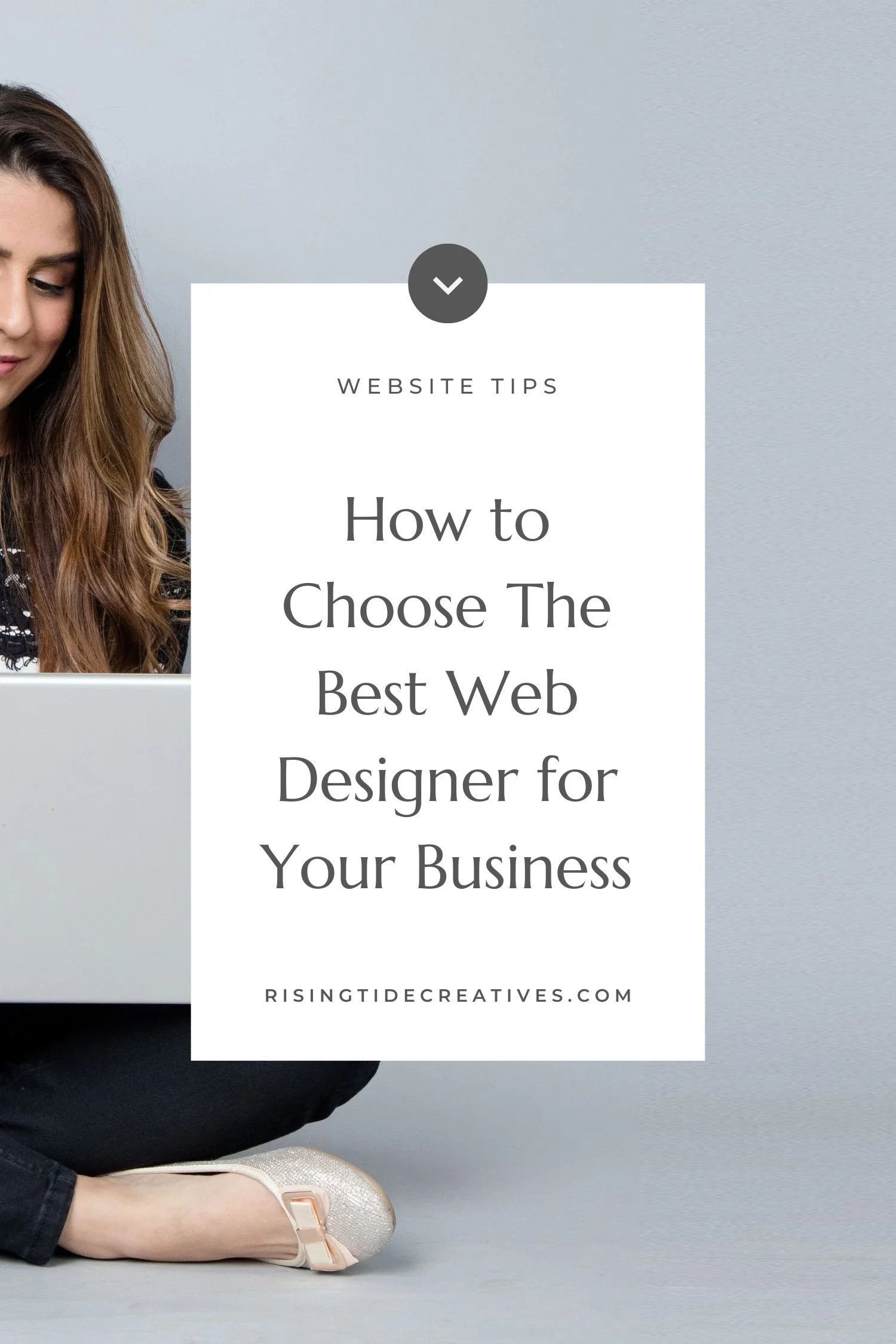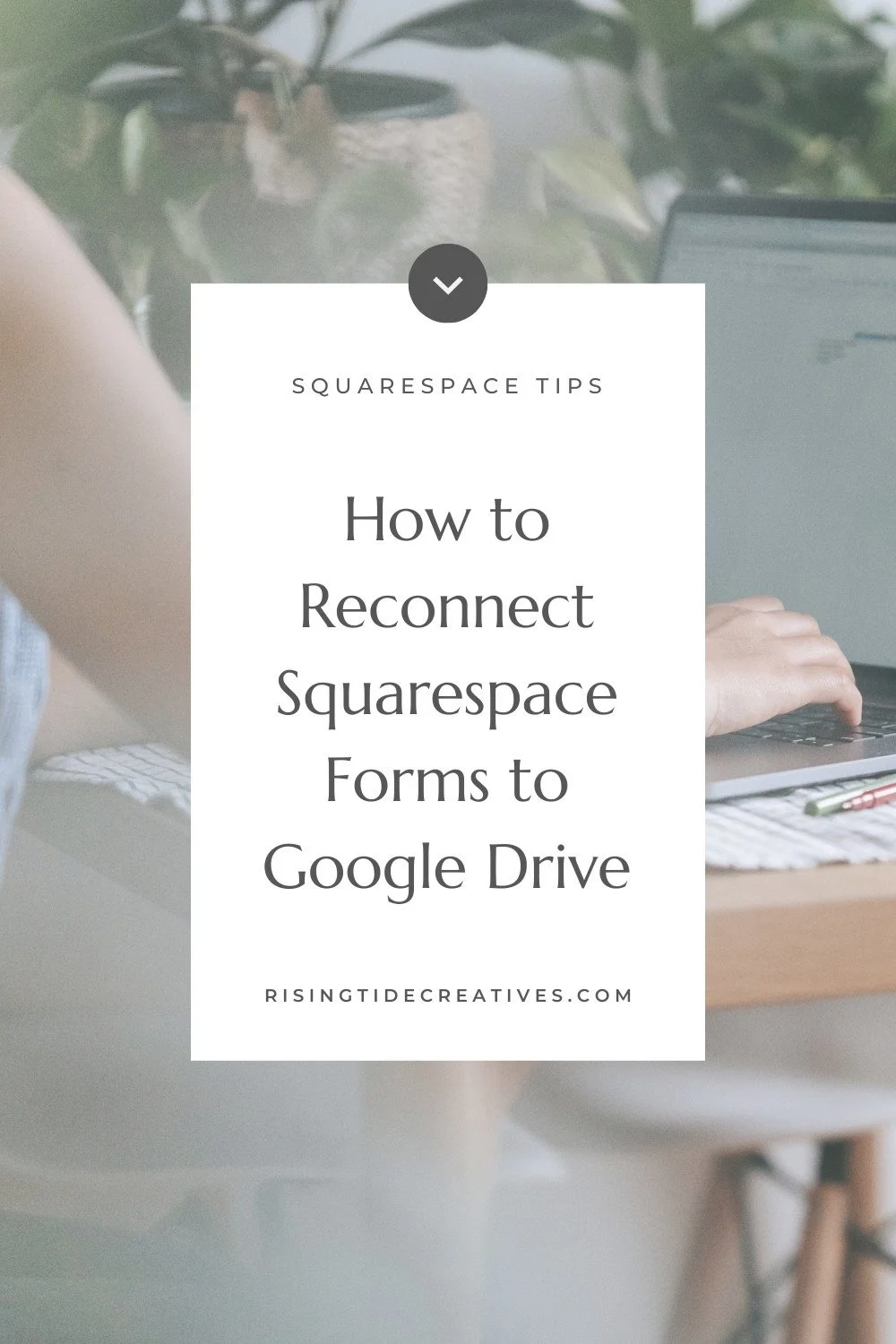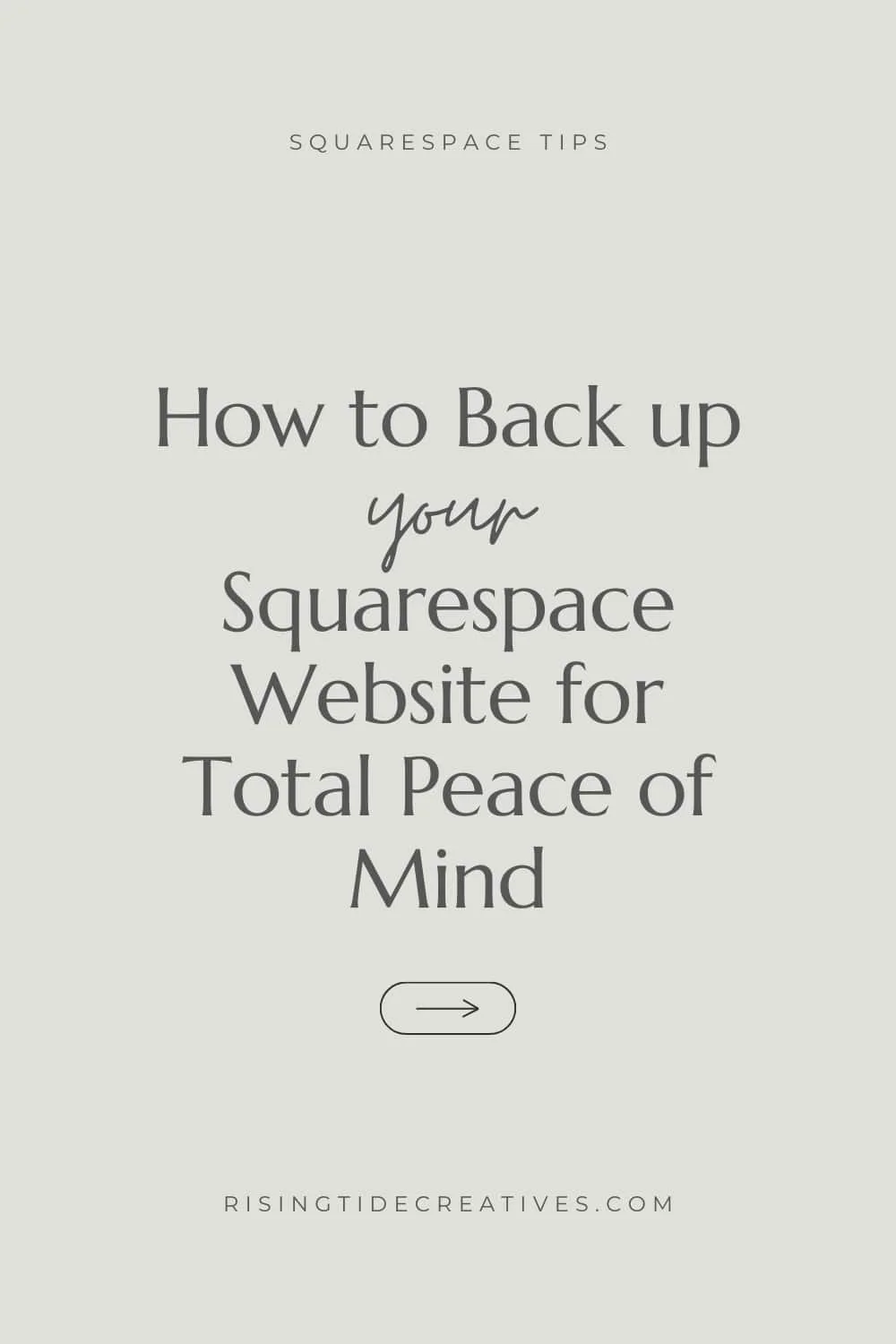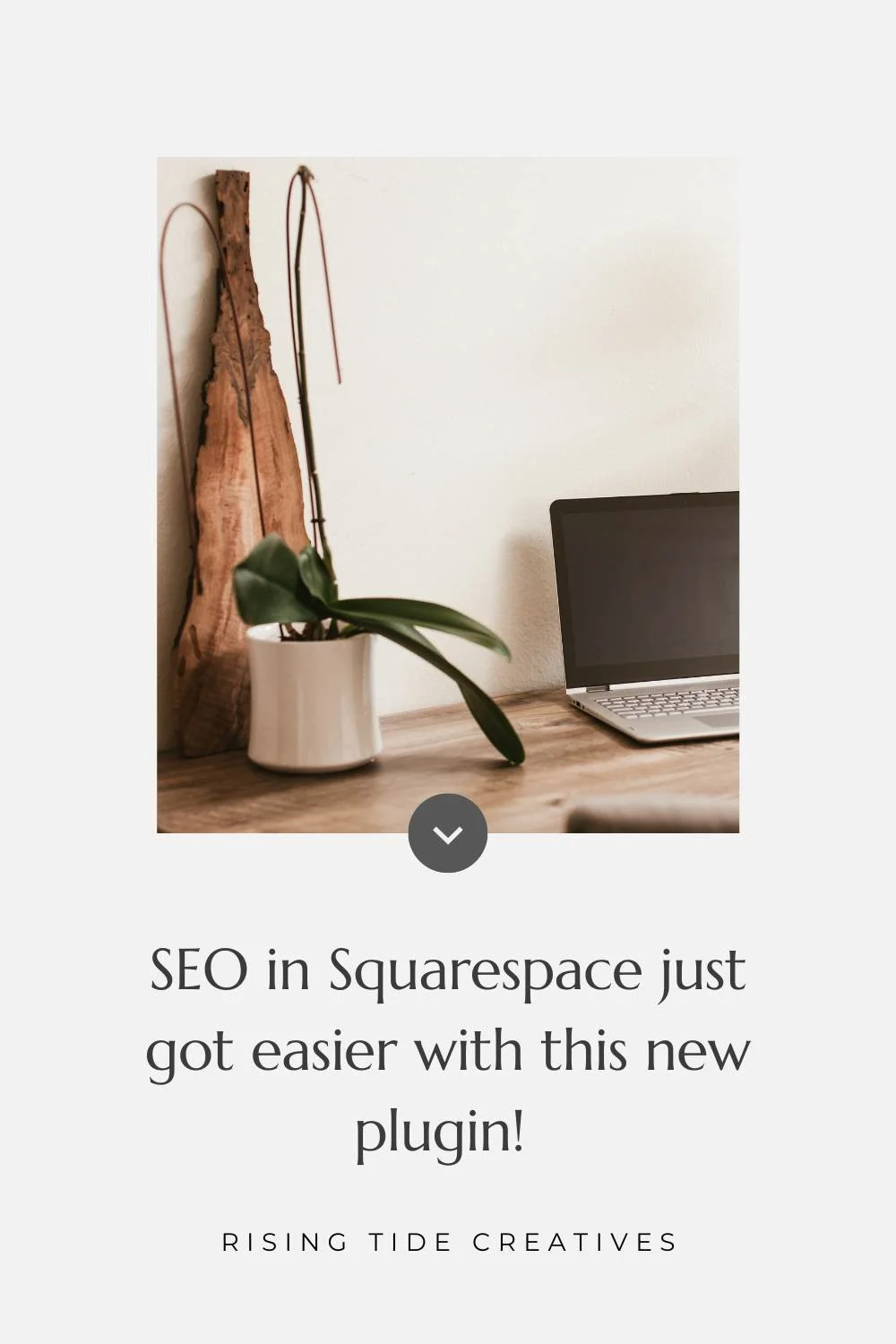How to Choose a Web Designer - The Ultimate Guide for Small Businesses
When speaking to clients and prosective clients, one of the things that comes up often is their worries about making the “right choice” for when then choose a web designer for their small business.
I get it, the question of how to choose a web designer is an important decision, and given that web design can be a large investment, and the success of a website a make or break for a small business it’s important to make a good choice!
Worry no more ! Here’s the ultimate guide on how to choose a web designer - especially for small business owners and solopreneurs like you!
1. how to choose a web designer Step One: Check out your potential web designers previous work
Start by looking at your prospective web designers their portfolio.
Have a look at the live websites they’ve designed too if you can.
See whether their aesthetic is inline with yours.
Notice whether their sites are professionally finished - you can do this by checking on links, reviewing content and exploring the sites.
Can you tell by visiting the site what the strategy of the website is (what the website owner wants you to do when you’re there?) this is a great way to test out whether they’re designing strategically or just making sites look pretty.
2. how to choose a web designer Step Two: See whether they’ve got web design or work experience in your industry
This isn’t necessarily a deal breaker, but it can be incredibly useful to choose a web designer who has worked with others in your industry before. This is because they will understand more about the landscape of your sector and the objectives and functionality you might need from your website. For example I’ve designed websites for charities, personal trainers, coaches, yoga teachers, tourism/ travel, artists, artisans & photographers. I’ve also worked as a Charity Director, Coach, run a dive center and am a yoga teacher. I’m also (duh) a small business owner! I have, therefore, an extra special understanding of these industries and contexts which gives me an extra summin summin when working with others in those industries.
Another thing that can be useful is to choose a web designer who has worked with others at the same stage of business development as you. For example I tend to work with start ups, this means I’m particularly well placed to support folks with their first website and with common questions and challenges that come from the start-up business stage. I do work with more developed businesses too, but I have a special affinity and skill for those at the beginning of their business journey.
3. how to choose a web designer Step Three: Speak to their past clients (or at least snoop the testimonials)
The best people to let you know what the experience of working with a designer was like are their past clients. See whether your web designer will put you in touch with people they’ve created websites for in the past so you can ask them questions directly (if they’re confident in their work they’re usually really happy to do this).
Sometimes you can even find their contact details of past clients via your designers portfolio or social media accounts - usually people don’t mind at all a polite message asking how their experience was (and those that were happy will usually love to rave about their choice of webdesigner !)
Not able to speak with past clients? Check out their reviews and testimonials instead - see what themes you can draw out. (Remember that designers will usually hand-pick their testimonials so you’re unlikely to see any feedback from unhappy clients, use reviews from a 3rd party platform like google or facebook where possible to be sure to see reviews that were written and submitted by clients).
4. how to choose a web designer Step Four: Get on a discovery call and ask your potential choice of web designer allll of the questions
Check out this list of my "must ask" questions for your web designer.
Test out your rapport too - do you feel like you can work with them? A discovery call is a great way to get a feeling for the designer as a person as well as a forum to go through your most important questions.
5. how to choose a web designer Step Five: Take a note of the questions your potential web designer asks you
Are they interested in your strategy, goals and priorities?
Do your potential web designer challenge you in a “good way”?
Are they listening when you answer (this can be hard to tell on a call but good signs include them asking relevant follow up questions, or showing listening signs like nodding, making eye contact with the screen or jotting down notes).
Do they ask good questions that make you think?
Do you get the sense that they’re also evaluating whether they’re the right fit for you (a web designer that will tell you honestly if they’re not the best fit for you is a valuable thing!)
Remember a pretty website isn't necessarily a good website - take note of whether they are engaging with you in a way that will enable the creation of a website with a strong strategic foundation.
6. how to choose a web designer Step Six: See whether your potential web designer has their sh*t together
Does the web designer respond quickly to your emails?
Does the web designer have a sound contract and payment system and process?
Does the web designer’s approach feel professional?
The website process is made a million times easier by someone who has strong processes and is a good project manager. The above are some great signs to look out for to see if this is the case. A web designer who you have to chase down to respond to your emails, or who doesn’t seem to have clear systems in place is probably not someone who is going to be a breeze to work with in your project.
Finally on this point - if there’s no contract … run a mile! Any good web designer worth their salt will have a fair and transparent contract that makes both of your roles, responsibilities and positions clear.
7. Decide if you prefer working with an agency, or a one-person show
There are pros and cons to each, so here’s a quick overview.
When you work with an agency they’ll often have specialists in multiple domains that can help you, with everything from copywriting, to brand design, through to more complex development if you site needs it meaning you have the expertise of all these areas feeding into your site. Agencies often also have more flexible workforces so can sometimes take on projects more quickly.
The downside - internal communications and workloads can get confusing, which can lead to stretched out timelines and misunderstandings as you’re not always talking to the person who’s doing the actual work. Agencies also may charge more as they essentially have the overheads of a larger business model to cover, as opposed to sole traders who only have themselves (and of course their costs - taxes, equipment, software etc) to pay.
If you’re a designer who wants to start out in an agency - you can find opportunities for remote working Entry Level Web Designer jobs on Jooble
Working with an individual designer has the benefit of the person you’re speaking with is (usually) doing the actual work and so has a clear understanding of what it is you’re trying to achieve. You also lose the risk of miscommunications and slower project timelines due to work being handed off between various people. Working with an individual designer is often a more personal & higher touch relationship & process, perfect if that’s something important to you. Prices can tend to be slightly lower too for the reasons explained above.
On the downside - your designer is more likely to be more or a generalist (although they will sometimes bring in trusted colleagues where the project requires it, or recommend you have certain project components done in advance for example your copy, or branding). You also may have longer to wait if your designer is popular as they have a less flexible “workforce” and of course you run the (albeit small) risk that if something happens - your designer gets sick for example - your project could end up getting pushed back as they don’t have a team that can cover for them.
8. how to choose a web designer Step Seven: Check out what website platform your potential web designer uses
Squarespace, Wordpress, Wix, Shopify, Show-it… the list goes on. The platform that your web designer works on is important as not all platforms are built equally. Some platforms will have a CMS (Content Management System) as part of them (or added on - like a theme on Wordpress) which allows for easier editing and often quicker designing. All platforms have pros and cons and are suited for slightly different businesses and website needs.
Don’t know much about website platforms yet? Read this on Squarespace vs Wordpress and this review of Squarespace for some more background.
My recommendation is to do your research on what platform you think will work best for you and your website. However once you’ve done that, remain open. There is a great deal of cross-over between platforms and often the designer is more important than the platform itself (not to mention that a good designer will give you honest advice about the best platform for you, and will refer you on if it’s not a platform they work on).
9. how to choose a web designer Step Eight: See what their web design packages include
Choosing a designer who has a package that will work for you and your needs is really important. As with everything look back at the objectives for your project and your success criteria - you might not need everything on that huge list of inclusions so be mindful not to be swayed because the list looks impressive - think about what you really need and check for that before getting excited about the jazzy extras.
It’s not always what’s included to focus on though, look for what’s not included in the web design package too - it’s also important you’re clear about what you might need to source from elsewhere or DIY.
Finding this a useful read? Check out more of my blogs written especially for small business owners like you …
10. Check out their pricing, compare it to other web designers in the market (and your budget!)
Like most investments the cheapest web designer is not always the best choice, but it’s not always an indicator of poor quality either - sometimes new designers who are really talented offer lower prices to attract clients, other times, designers have significant passive income streams so they are able to do custom work at a lower price point as they rely less on it for their income.
Similarly the most expensive web designer won’t necessarily give you the best website either so don’t be fooled by the idea that because it costs a lot it must be worth it - it doesn’t always follow to be the case.
Regardless of your budget you will want to think about being responsible and ethical in relation to what you pay your web designer - particularly if you enter into any project negotiations. To help with this there are a few factors to bear in mind:
Web design is a skill which your designer will have spent time and money developing.
Out of what you pay them your designer will be paying their tax, social security, platform and other overhead costs, marketing and potentially staff costs. They’ll also have to cover their own holiday and sick pay and perhaps pay into a private pension. It’s absolutely reasonable to assume that of what you pay they actually keep not a lot more than 50-60%.
Based on an approximation of their net income from your project and the time they will spend on it (for example for my two week website projects I work full time on one website for 2 weeks) you can approximate how much they’re earning.
Of course it’s not your responsibility to set prices or wages for your web designer, but avoiding paying someone less than minimum wage to do a project that requires a high level of technical skill and knowledge is certainly a sound ethical business decision and one as a designer I whole heartedly support as being important for the industry as a whole.
My advice - do a little research and give yourself a budget range which is reasonable for the work you need to have done, then target your discussions and research toward designers who fall more or less within this range. Still umming and ahhing between hiring a web deisgner and going the DIY route - read this before you decide.
Can’t realistically afford a custom build? A beautifully designed template that you can edit yourself can be a great solution for start up businesses. Make sure you’re on my email list to be the first to know when my template shop is open!
11. Listen to your gut when you choose your web designer
Not the most technical advice - but certainly not something to skip. Once you’ve gone through numbers 1 to 9 on the list of factors to consider when you choose a web designer, number 10 is to use your intuition.
As with any decision in life or business, there are the parts that are logical, and the parts that are well… not! Don’t forget to listen to your gut feel and feed that into your decision making too. The best decisions are a little head and a little heart after all.
Think I might be a great fit for your webdesign project?
New on the ‘Gram…
























